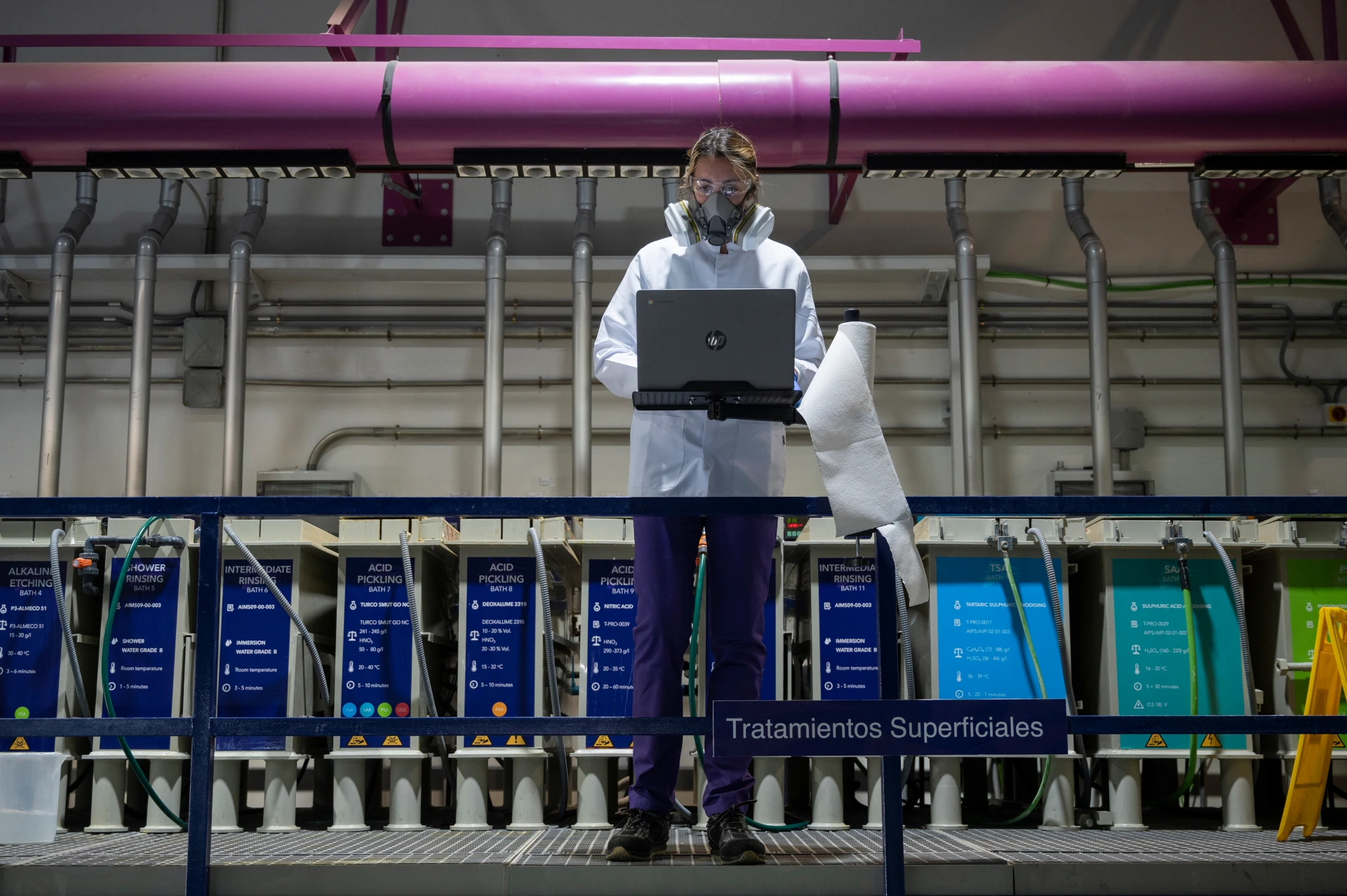
The RESINSURF project is an innovative response to the need to implement alternative surface technologies through a standardized and effective action strategy aimed at dealing with common challenges in the SUDOE territory (southwestern Europe). In particular, the project focuses on researching and developing an alternative to substitute hexavalent chromium – Cr (VI) – for the surface coating of metal alloys. This will contribute to the industry’s ecological transition and to the protection of workers by ending the use of coatings that include hazardous substances, such as chromium.
In this respect, RESINSURF offers and promotes a line of action aimed at:
- The technological modernisation of the sector and digitalisation of its methods.
The development of new techniques for monitoring treatment lines, making them smarter and more sustainable and competitive.
The offer of sustainable technological alternatives, in order to reduce the negative impact on the health of workers and the environment.
The transfer of new technologies to the entire SUDOE territory (France, Portugal, Principality of Andorra and Spain).
To meet this challenge, a multidisciplinary R&D+i consortium has been formed, made up of eight international entities with the necessary skills and knowledge to cover the project’s entire value chain. Specifically, the consortium includes:
Fundación CIDETEC (Spain): technological centre and leader of the project, whose role is focused both on the development phase and on the implementation and transfer of the solutions to the partners Chrome Dur Industriel and Titania.
SAS INEOSURF (France): company in charge of providing the analytical and technical means for the optimisation of the chemical process, the development of alternative electrodeposition processes based on less polluting electrolytes, and monitoring techniques.
Universidade de Aveiro-Departamento de Engenharia de Materiais e Cerâmica (Portugal): institution responsible for the development of baths and the characterisation and integration of anticorrosion nanomaterials.
Asociación de Industrias de Acabados de Superficies (Spain): entity in charge of the project’s communication activities.
Smallmatek (Portugal): company responsible for the development and optimisation of a new range of corrosion inhibitors for incorporation in electrochemical processes.
Chrome Dur Industriel (France): company in charge of adopting the alternative process to hexavalent hard chromium.
Université de Pau et des Pays de l’Adour-Collège Sciences et Technologies pour l’Energie et l’Environnement (France): institution in charge of the definition of strategies and a training plan focused on advanced technology for surface treatment and recycling of materials.
Titania Ensayos y Proyectos Industriales (Spain): company responsible for defining the test plan to validate the new processes and the adoption of the protection process for light alloys to replace Cr (VI) coatings.
In addition to the consortium, several associated technological entities are collaborating, and this will complement and strengthen the capabilities of the main consortium. These associated entities are: PRIFER Fundiçõo S.A. (Portugal), Chemplate Materials S.L. (Spain), Plataforma Aeroespacial Española (PAE) (Spain), Sociedade Portuguesa de Materiais (SPM) (Portugal), RAMBOLL Group (Spain), Don Bosco LHII (Spain), University of Cadiz (Spain), and FINITEC ELECTROLISIS S.L. (Spain).
Titania’s challenge in this project is focused on:
Validating at pilot plant level the processes of substitution of hexavalent chromium coatings in the protection of light alloys. Three processes will be followed: 1) anodising processes then used to anaphoretically coat the specimen; 2) anodising processes with corrosion inhibitors together with anaphoretic coating; and 3) anodising processes together with the anaphoretic coating with the inhibitors included.
Implementing and validating control and monitoring systems (on-line and off-line), in particular for the anodising and anaphoretic bath processes.
RESINSURF starts in January 2024 and will run for 36 months; it is funded by the Interreg Sudoe Programme and co-financed by the European Commission through European Regional Development Funds (ERDF).


